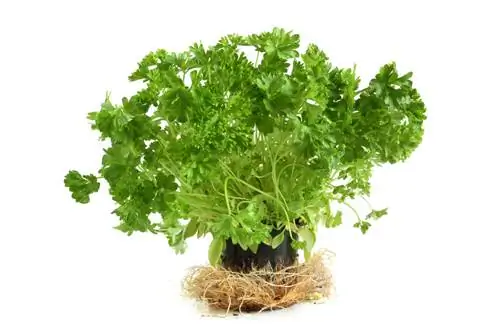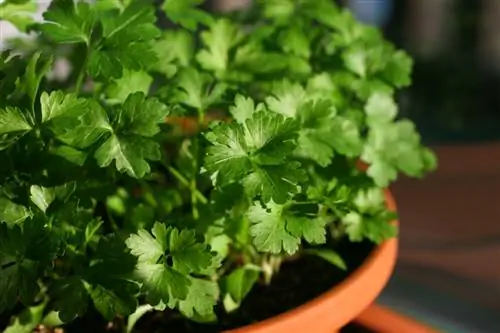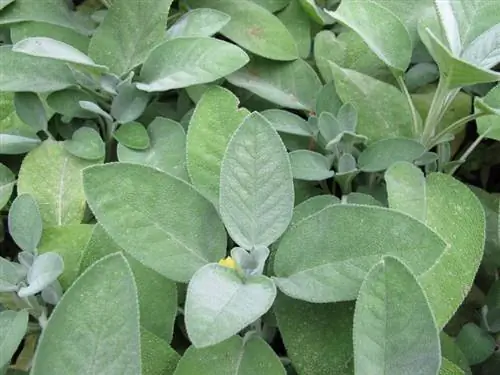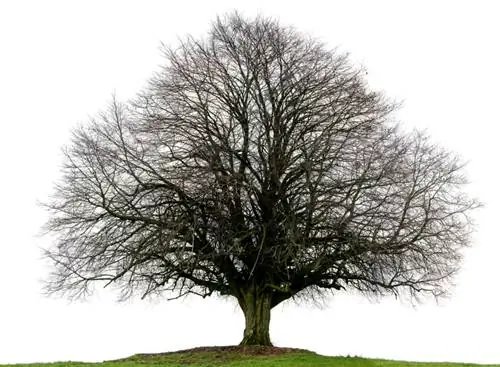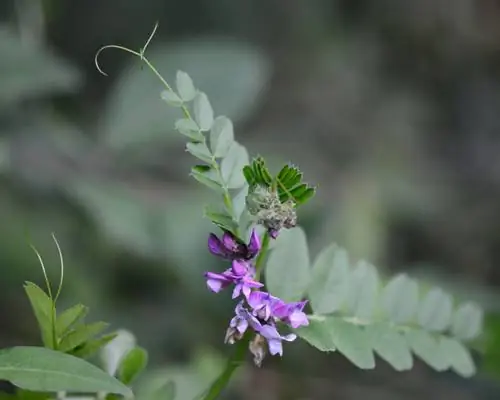- Author admin [email protected].
- Public 2023-12-16 16:46.
- Last modified 2025-06-01 06:02.
Parsley is the most popular herb in Germany. There is hardly a hearty dish or salad that does not require parsley. But did you know that parsley contains toxins? Interesting facts about the origin and cultivation of parsley.

What is a profile of parsley?
Parsley (Petroselinum crispum) is a biennial plant from the umbelliferous family with dark to light green, smooth or curly leaves and yellow-green flowers. It comes from the Mediterranean region, is suitable as a spice and medicinal plant and contains small amounts of the poisonous essential oil apiol.
Facts about parsley
- Botanical name: Petroselinum crispum
- Origin: Mediterranean region
- Plant family: Umbelliferae
- Popular names: Peterling, Peterli, Silk
- Age: Biennial plant
- Leaves: Dark to light green, smooth or curly
- Flowers: yellow-green
- Flowering period: June - July
- Harvest time: All year round until flowering
- Use: Spice and medicinal plant
- Location: window sill, balcony, open air
Tips for planting parsley
Parsley is a bit sensitive at first. Due to its origins in the Mediterranean region, it germinates best at higher temperatures.
It neither tolerates direct sunlight nor does it get waterlogged.
Parsley is not suitable for planting in a herb spiral because the soil has to be changed with each new planting.
How to properly care for parsley
Once the parsley has found a favorable location, it needs little care.
Caution is advised when watering, as the plants cannot tolerate too much moisture and then do not grow but die.
You should also be careful with fertilizing, as parsley does not tolerate fresh organic fertilizer.
Uses of parsley
The leaves of parsley are most often used raw as a seasoning for potatoes, salads and much more.
Its use as a medicinal herb is less well known today. Parsley can be used as a tea for urinary tract problems.
Why is parsley poisonous?
The poisonous essential oil apiol accumulates in the leaves but even more so in the seeds. It causes the muscles of the digestive organs and uterus to contract.
Once the plant flowers, the leaves are no longer allowed to be eaten. The parsley should then be discarded.
Pregnant women are generally advised not to eat parsley. The seeds were once even used as a means of terminating pregnancy.
Tips & Tricks
Originally, parsley basically had smooth leaves. Since these looked very similar to the very poisonous dog parsley and serious poisonings occurred, monks bred curly and moss-curled varieties. These cannot be easily confused with the smooth-leaved, poisonous herb.

